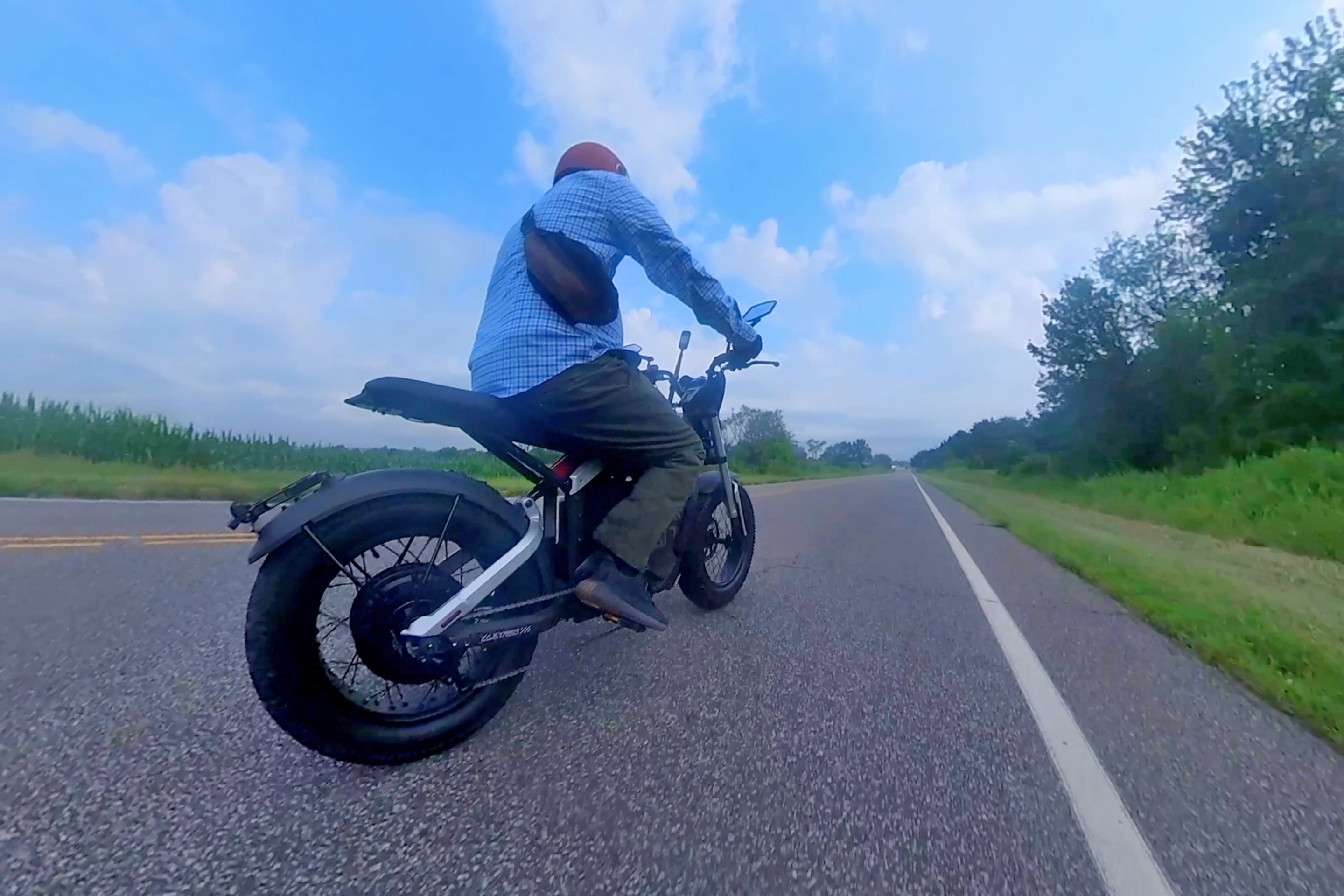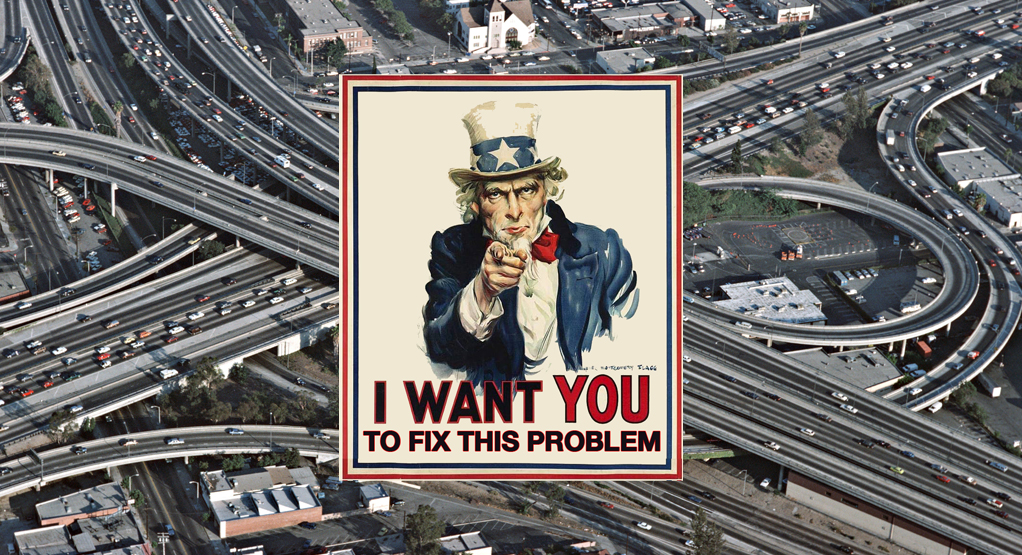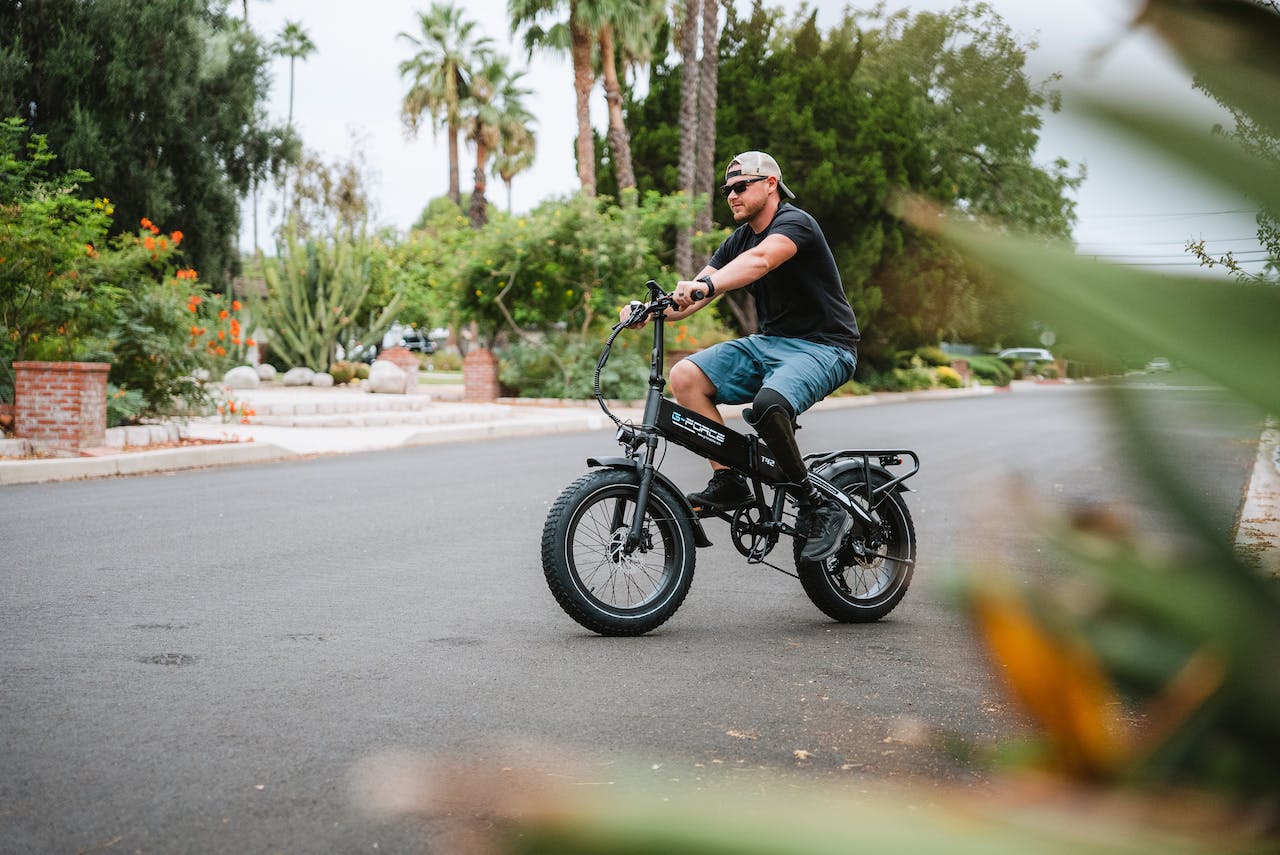
Michael Andersen blogs for The Green Lane Project, a PeopleForBikes program that helps U.S. cities connect high-comfort biking networks.
"Hey, how long does it take you to get to work?"
"Well, on average my car is usually traveling at 36 mph."
No actual human makes transportation decisions this way. But for some reason, the federal government has proposed evaluating highway congestion based entirely on the speed of cars -- while ignoring how far or how long people have to drive or ride to get where they're going.
It's a system that'd reward states for spending billions to extend freeways to sprawling exurbs, transportation reformers warn, but penalize communities that make their streets more space-efficient.
"Let's say your [road's average speed is] going from 40 mph to 30 mph," said Katy Hartnett, director of government relations at PeopleForBikes, in an interview. "Maybe at 30 mph you're actually moving more people through, because you've put a bus on it, or a bike lane."
For the White Flint neighborhood of Montgomery County, Maryland, that's exactly the risk. The county has a long-term plan to run a bus rapid transit line and protected bike lanes up Rockville Pike, greatly improving access to the White Flint Metro Station. Old Georgetown Road would also get protected bike lanes, helping form a connected bike-and-transit network that could combine to create convenient alternatives to rush-hour traffic in this redeveloping suburban area.
"Montgomery County, it's growing quickly," said Garrett Hennigan of the Washington Area Bicyclist Association. "Over the past five years there's really been a change in focus and a change in thinking in how we should plan around the bike."
But the federal rules as currently proposed might penalize Montgomery County for trying to get ahead of its congestion problem. That's because Rockville Pike and Old Georgetown Road are both classified as "principal arterials," which makes them part of the Federal Highway System, which means any slowdown in auto traffic would raise bureaucratic red flags -- even if the actual result would be to help more Marylanders escape congestion.
Rule could make it harder to build protected bike lanes

Look around the country and you'll see many cities trying to cut congestion while improving public health and equity by adding protected bike lanes to "principal arterials." Here are a few:
- Desplaines Avenue in Chicago, an important north-south link in one of the country's best downtown bike-lane networks.
- 2nd Avenue in Seattle. We named it the country's No. 2 bike lane of 2014.
- Rosemead Boulevard in Temple City, California. We named it the country's No. 4 bike lane of 2014.
- Queens Boulevard in New York City. We named its first phase the country's No. 3 bike lane of 2015; many more improvements are on the way.
The proposed federal rule wouldn't make projects like these illegal. It'd just make them look bad on spreadsheets, even if in the real world they're improving the average commute.
"This is how the discussion over congestion will be framed," said Stephen Davis, spokesman for the mobility advocacy group Transportation for America. "Everybody who writes about it, everybody who covers it, every time there's a community meeting about a project, somebody will be able to say, 'well, this project will mean that if we add our protected bike lanes, then we won't make our targets.'"
Over time, Davis said, treating automotive speed as the top priority can starve a city or a business district of its most precious resource: how much people want to be there.
"A local community says, 'Well hey, that doesn't actually jibe with our goals — we're trying to turn this into an enjoyable downtown main street and you're trying to turn this into a speeding highway,'" Davis said.
That's too bad, the proposed rules would say.
Smarter rule still possible

There's still a chance to amend or block these rules, Davis and Hartnett said. Ideally, congestion would measure people rather than machines.
But people can, admittedly, be difficult to measure. So Davis and Hartnett both suggested that a smarter federal rule would also give road projects credit for the auto trips they prevent.
They hope this would be a way to start changing the assignment that the United States has given its thousands of transportation engineers.
It would no longer have engineers ask only "How can we make cars move faster?" It'd ask them to put their brains toward another problem: "How can we get people where they want to go?"
"This is important because it sets the norms," Davis said.
To send your comments to the Federal Highway Administration, click here.
The next phase of the Green Lane Project is the Big Jump Project, which will select 10 very different neighborhoods and districts and help them quickly connect biking networks. Find out how your city can apply here.






